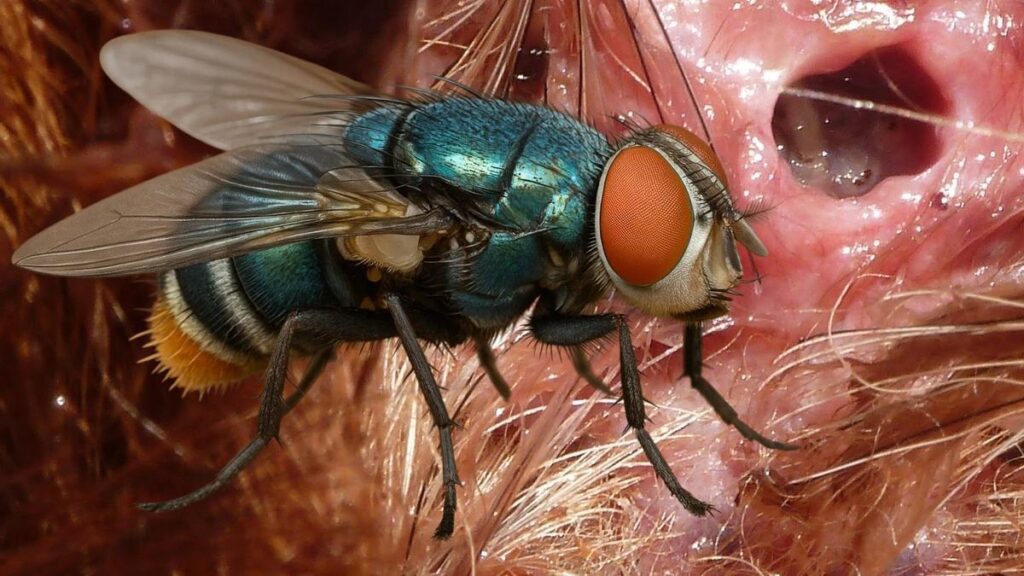
A carnivorous parasitic fly is invading North and central America. The consequences could be serious for the livestock industry, but it can also infest a wide range of guests, including humans and their pets.
The appearance of a carnivorous fly, commonly known as “screw worm” (New World Screwworm), in territories of Central America and moving towards North America, has lit the alarms of farmers and health authorities. This parasite dipter (Cochliomyia hominivorax) whose larvae feed on living tissue, is able to infest cattle, wildlife, pets and even humans.
The propagation of this plague He already forced to temporarily suspend the importation of cattle from Mexico to the United States, while experts are asking for immediate containment actions, according to informa Reuters.
Rapid propagation and economic losses
Specifically, the hominivorax cochliomyia females They deposit between 100 and 400 eggs on the periphery of open wounds of their victims. Between 12 and 21 hours later the larvae emerge, which are introduced into living flesh and generate deep and painful lesions. If they are not treated in time, they can lead to systemic and even lethal infections.
The adult specimens of this insect live two or three weeks: while males feed on nectar, females actively seek Wound fluids To nourish and reproduce, something that facilitates its dispersion to great distances. The advance of the carnivorous fly has been documented from Panama to northern Latin America, reaching in November 2024 the Mexican states of Oaxaca and Veracruz.
From that moment on, the fly has continued to move north, with recent detections increasingly closer to the southern border of the United States. The warm and humid weather of Central America and southern Mexico offers optimal habitat for Larva development.
According to a article Published in The Conversation by scientists from the University of Liverpool, in the United Kingdom, and other British and Brazilian institutions, potential economic losses are considerable: it is estimated that a single outbreak without control could end with millions of head of cattleaffecting the production of meat and dairy and shooting veterinary treatment costs.
Consequences on animals and humans
In previous years, outbreaks in Mexico already caused temporary closures of export markets and millionaire losses for local farmers. In addition, the pets They are not exempt: dogs and cats with open wounds can become victims.
On the other hand, although human cases They are less frequent, they are not impossible. There are reports of infestations in rural workers and tourists with injuries that require surgical intervention to manually extract larvae and antibiotic treatments to prevent complications, according to publica Scientific American. The invasive capacity of this fly, together with its preference for living fabrics, makes it a risk to public health in rural areas.
Faced with this threat, the United States and Mexico have reactivated the Sterile insect technique (tie)used in previous cases. The United States Department of Agriculture (USDA) announced the construction of a production and liberation plant of sterile flies in Hidalgo County, Texas, while a similar installation in Metapa, Mexico is modernized. The massive release of sterile males interferes with the reproduction of the plague, reducing its population without the use of toxic pesticides.
However, specialists warn that the success of the TI depends on rapid binational coordination and continuous surveillance of infestation foci. The adaptation and voracity capacity of the carnivorous fly forces to adopt Comprehensive strategiesthat combine biotechnology, epidemiological surveillance and international cooperation.





